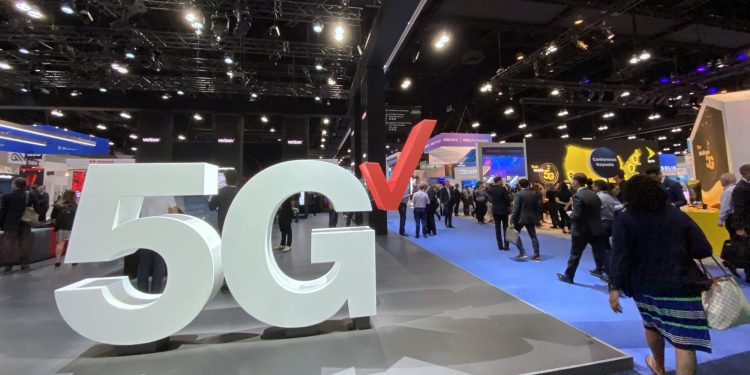If you’ve been following the last year of developments in the mobile world, you already know that 5G and mixed reality (XR) are two of the industry’s biggest topics right now, so it’s no surprise that they stood out at this week’s Mobile World Congress (MWC) Los Angeles. Interest in the next-generation cellular and wearable display technologies has continued to grow, so it’s a generally good thing that there’s a U.S.-based event to show off what’s currently happening in the industry.
While MWC’s February show in Barcelona is a massive gathering of carriers, device makers, and network equipment suppliers with tons of announcements, there’s not a lot of consumer-facing news at the Los Angeles event. Instead, this year’s MWC Los Angeles is focused largely on already-known products and services, alongside promises to bring them to more customers in the months to come.
But there are some worthwhile booths at the show for people who are following upcoming 5G and mixed reality offerings. Here are some of the most interesting things I’ve seen.

June 5th: The AI Audit in NYC
Join us next week in NYC to engage with top executive leaders, delving into strategies for auditing AI models to ensure fairness, optimal performance, and ethical compliance across diverse organizations. Secure your attendance for this exclusive invite-only event.
Verizon and Sprint as 5G flagbearers
Only two of the top four U.S. cellular carriers showed up to exhibit at MWC Los Angeles, and I’m glad they did. Their big, well-staffed booths were among the most compelling at the show, and unsurprisingly focused heavily on 5G and mixed reality. Verizon and Sprint proudly placed live 5G networks and hardware right at the front of the L.A. Convention Center’s South Hall, and there were zero excuses or attempts to manage expectations for device performance — something that can’t be taken for granted, given the wireless signal nightmares at trade shows.
At Sprint’s booth (above), a handful of smartphones and HTC 5G Hubs were ready to show off the carrier’s real-world 5G performance — sub-200Mbps typical, 600-700Mbps peak — as representatives explained, accurately, that the strength of Sprint’s 2.5GHz network was its comparative ubiquity and ability to work indoors, while Verizon’s millimeter wave 5G network could deliver higher speeds, but over much shorter distances and sometimes not inside.
This wasn’t news to anyone who has been following the last year of 5G developments, but it was concrete in Los Angeles, where both companies are offering service. Verizon still doesn’t have 5G coverage maps in the city, but Sprint does, and as I walked outside with a live 5G phone, I saw actual speeds ranging from 150-313Mbps, in some cases 30 times faster than the speeds of 4G T-Mobile and Verizon phones tested at the same times in the same places. In other words, 5G isn’t hype; it’s real, at least with the right devices in the right places.
The only disappointment at Sprint’s booth was a sketchy 5G XR demonstration that occupied most of its floor space. Users were given first-generation Microsoft HoloLens headsets that were augmenting a model of a 5G-powered city and could walk around the city to see floating virtual data of how various areas will benefit from future networked services. It was a fine way to let users see how augmented reality and 5G will work, though the mediocre HoloLens hardware and mostly text overlays didn’t really do justice to the concept.

Verizon’s booth felt sort of like walking through a gorgeous new car dealership with no actual cars on display. There were plenty of large signs touting the strength and cities covered by Verizon 5G, but no big attraction really spotlighting the technology. Instead, the carrier had a collection of kiosks with fairly modest demos, some of which appeared to be experiencing technical issues. Others were tantalizing looks at how 5G and XR will redefine mobile technology in the very near future.
In one, Verizon used smartphone-based AR to show how supermarket visitors will be able to see nutritional data for food products in real time — each product’s overlays are sent over 5G as a multi-layered video stream that only displays the layer of data you choose at a given moment. Another demo used 5G-backed VR to turn a large collection of digital security app windows into a 360-degree wraparound system that might be easier for a data security guard to watch than multiple monitors. And another was supposed to show how AR glasses could be used to augment a workplace, but the demo Vuzix glasses were using Wi-Fi and having massive lag problems that made the demo unusable when I tried it.
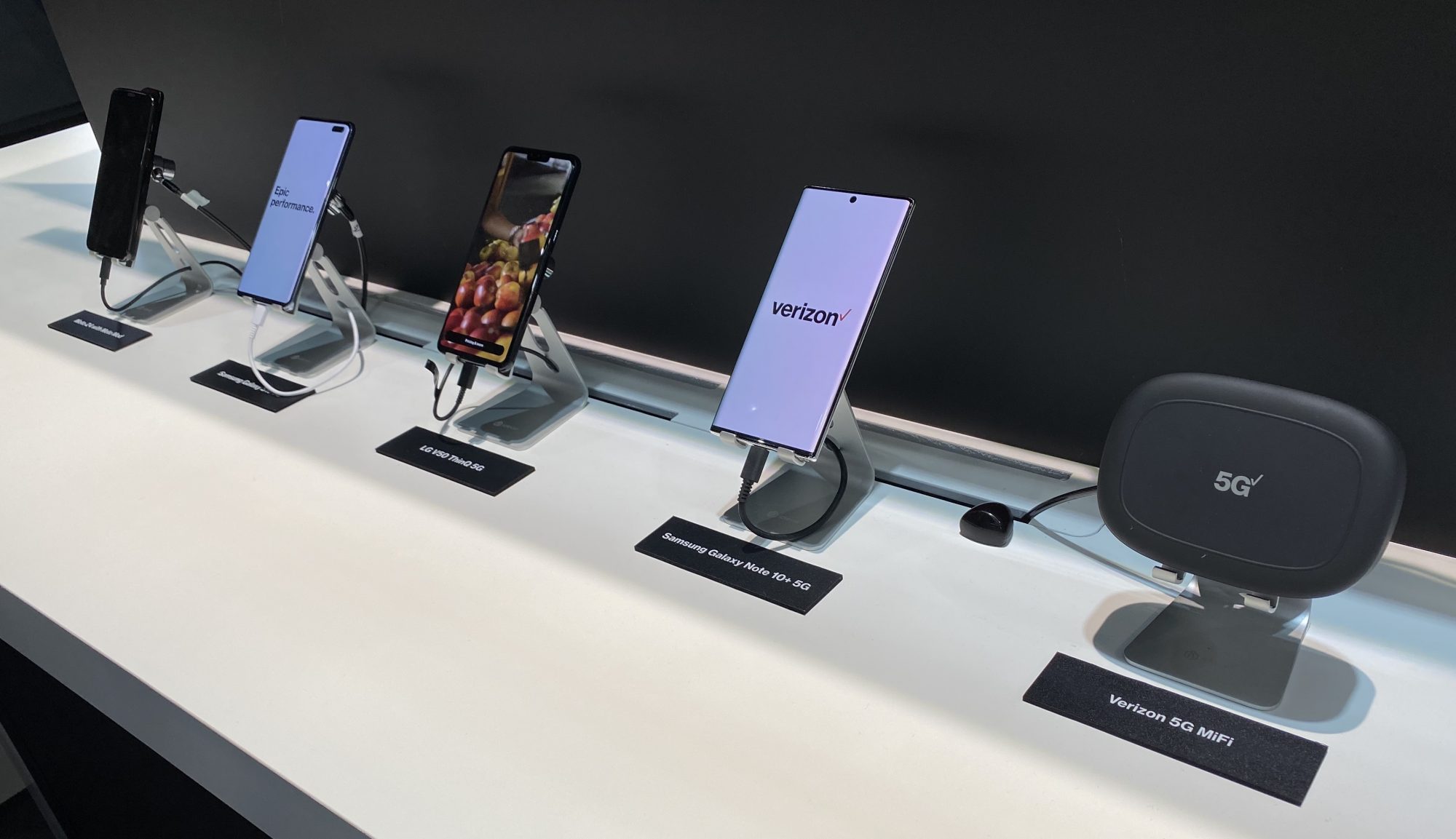
Verizon only offered a tiny collection of 5G devices — four smartphones and the 5G MiFi hotspot — none of which was newly announced. While there wasn’t anything newsworthy about the handsets, they were capable of hitting live download speeds in the 1.5Gbps range on the floor, showing just how powerful Verizon’s millimeter wave 5G network can be if you’re lucky enough to be within range of its towers.
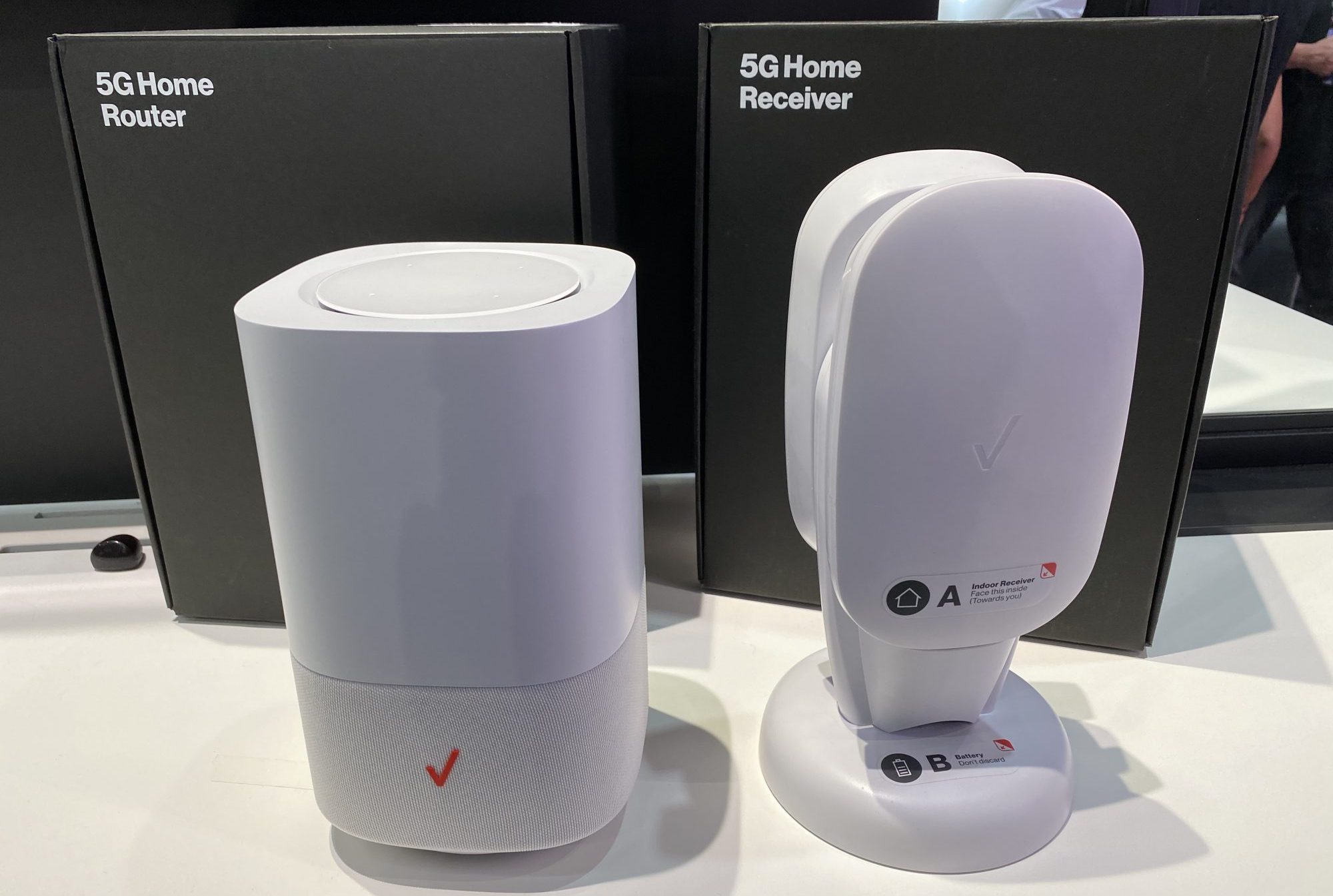
The biggest surprise at Verizon’s booth was a robust collection of new hardware for its 5G Home broadband service — the actual 5G NR standard-compliant devices that are now being offered in Chicago, but not yet to Verizon’s prestandards 5G customers in other 5G Home cities. Key to the rollout are the new Alexa- and Wi-Fi 6-equipped 5G Home Router and 5G Home Receiver window unit we covered earlier this week.
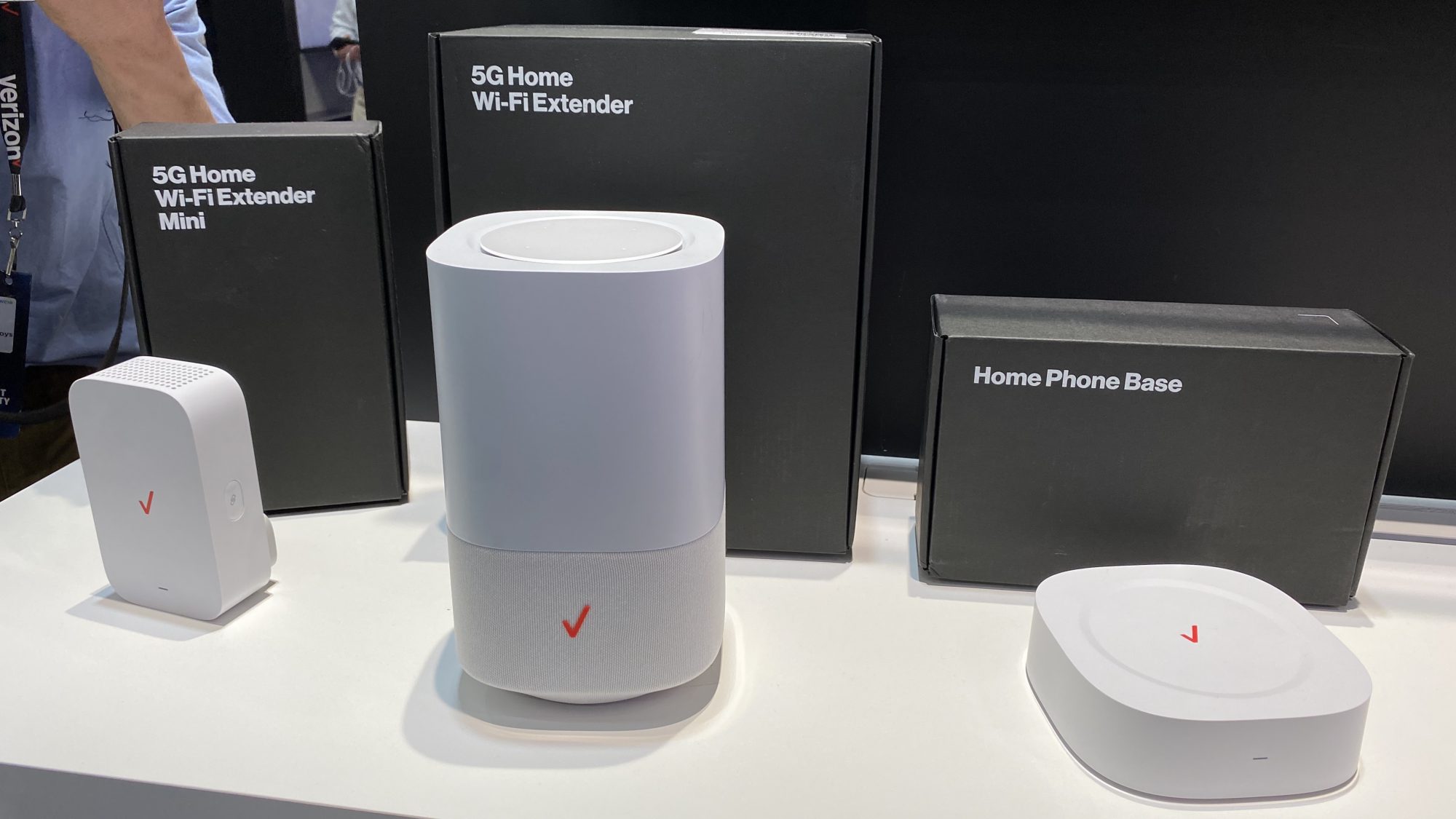
But Verizon also showed off a $99 wall outlet plug-in 5G Home Wi-Fi Extender Mini, which it’s unexpectedly including free with 5G Home service. Verizon also has a $299 5G Home Wi-Fi Extender with its own Alexa speaker, capable of forming a mesh Wi-Fi 6 network with the 5G Home Router. Users can put the $99 Mini’s credit toward the larger unit if they please. There’s also a $100 Home Phone Base to add 4G VoLTE home phone service for interested customers at a $20 monthly surcharge. Notably, all of the units have Verizon branding rather than any reference to an OEM partner and are subtly labeled underneath as “Designed in New York. Made in Taiwan.”
Smartphone makers
The Barcelona edition of Mobile World Congress is known for introducing numerous smartphones and mobile devices, including everything from smartwatches to hotspots and tablets, so I’d hoped there might be at least a little news from one of the players in this space. Unfortunately, there weren’t many smartphone companies at the show, and unlike CES, major players like Qualcomm and Huawei were nowhere to be seen on the MWC Los Angeles show floor.
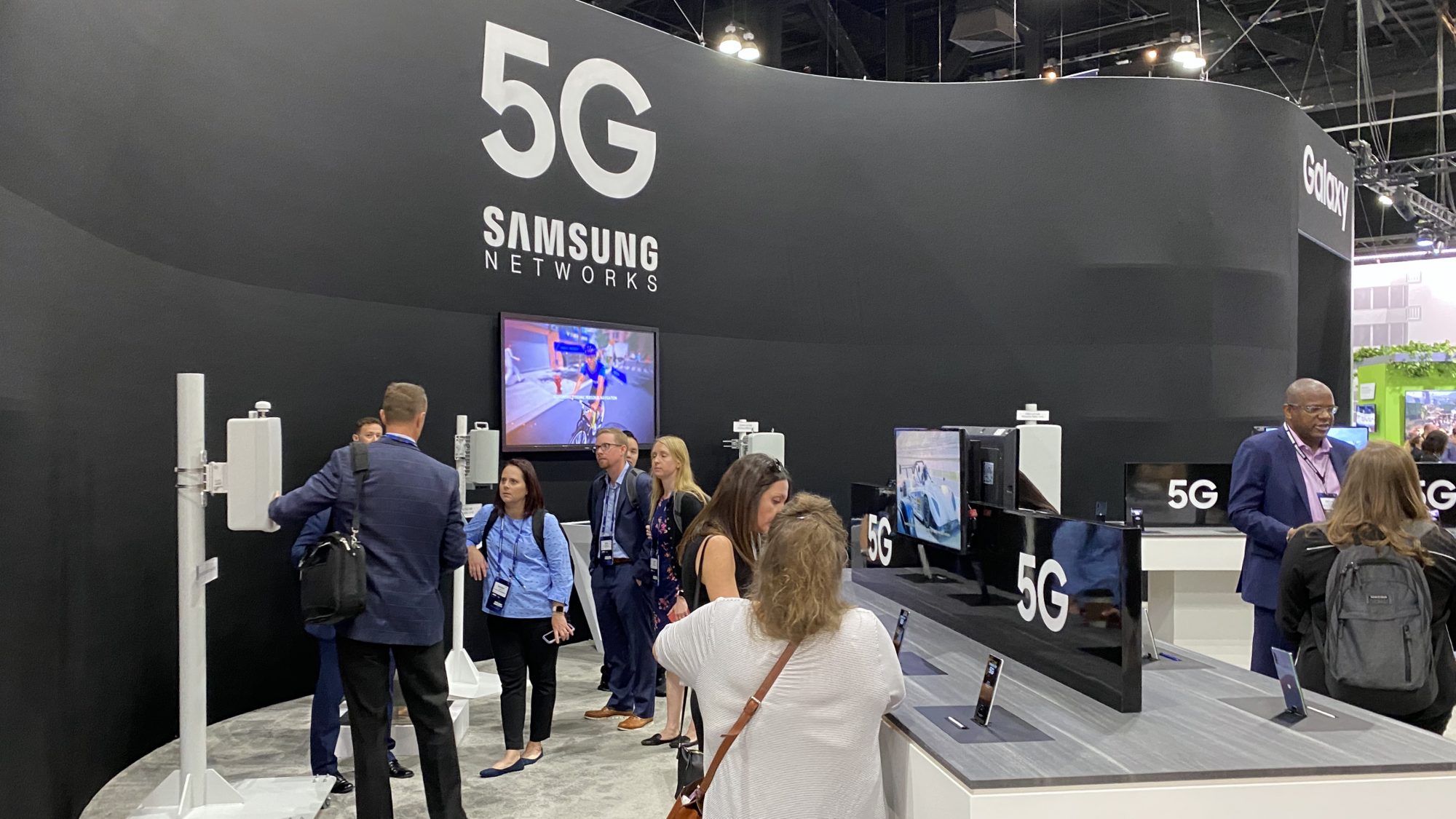
Samsung had a legitimate booth at the show, though its only announcements were related to more tightly integrated 5G base stations — news that might interest some carriers, but not the general public. The company had a collection of impressively small 5G small cells on poles in the center of its booth, separately covering everything from 39GHz (AT&T-ready) and 28GHz (Verizon/T-Mobile-ready) to 2.5GHz (Sprint-ready) and CBRS 3.5GHz frequencies. Verizon committed at the show to using Samsung’s millimeter wave base stations in its U.S. 5G deployment.
Unfortunately, Samsung’s 5G demos were some of the worst I’ve seen. For some reason, the booth was largely focused on showing prerecorded videos of a 5G demo — a race car achieving downlink speeds of over 2.4Gbps and uplink speeds of over 450Mbps. The video loop did a poor job of showing off the capabilities of Samsung’s otherwise highly impressive and popular 5G devices, which were ironically being used at other companies’ booths to show off the strengths of live 5G networks.
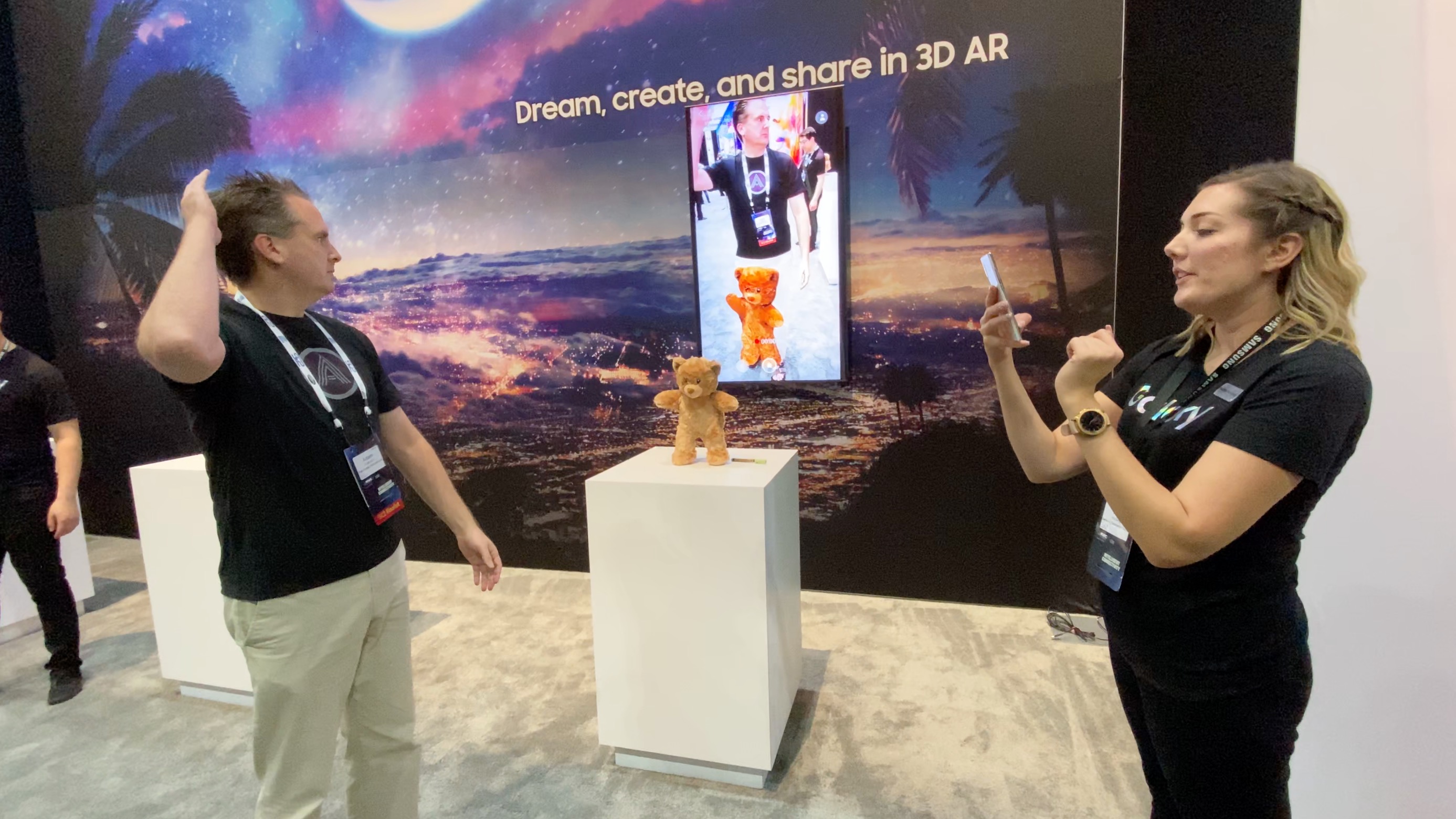
If there was any Samsung highlight, it was a collection of AR-focused demo stations that were hidden inside the booth. The best was a live version of the Note10+ 3D AR demo that began with the 3D scanning of a stuffed teddy bear, the “attachment” of that bear (with an automatically applied 3D skeletal system) to a real person, and the mimicking of the person’s movements by the 3D-scanned bear on a screen. It was a very tangible example of how AR avatars are about to take a huge leap forward, and particularly exciting because it’s a real thing today — available only for the Note10+’s time of flight depth sensing camera, but even so, here right now in an actual smartphone.
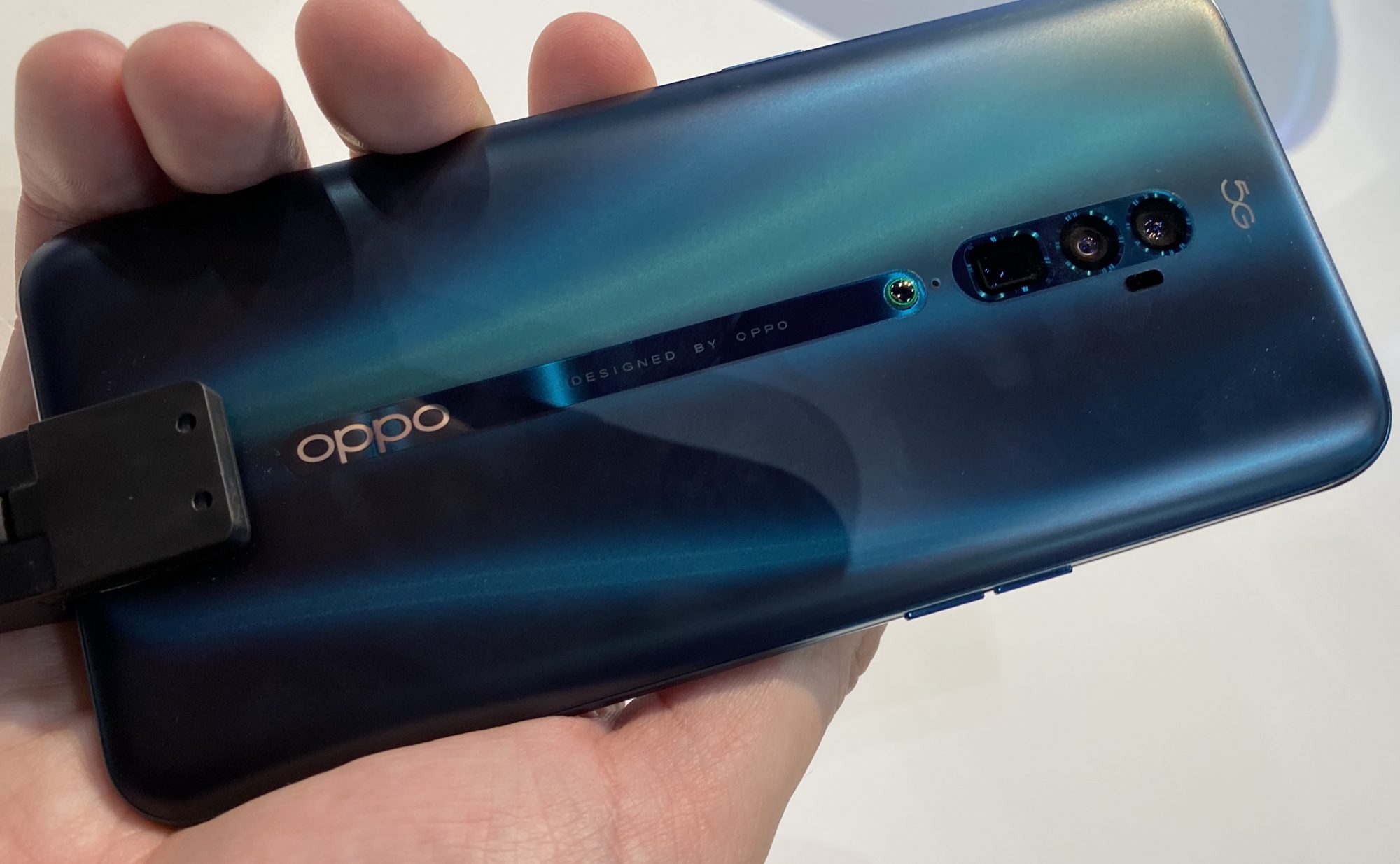
Oppo and Xiaomi used two sides of a relatively small booth to show off already-released 5G devices, including the Mi Mix 3 and Reno 5G, neither making much of an impression. It says something about the state of the smartphone industry that such wholly capable and relatively affordable devices could stay largely under the radar at a show like this: Features and design competence that would have been unthinkable five years ago are table stakes heading into 2020.
Best of the rest
There are lots of other exhibitors at MWC Los Angeles, but the vast majority are focused on carrier-side offerings that aren’t of particular interest to the general public. Here are a few examples.

Ericsson’s booth was almost exclusively dedicated to showing off base stations and recent advancements in 5G signaling technologies. The basic message is that 5G base stations are getting smaller, more powerful, and easier to hide inside nicely designed housings — light poles, beige boxes, pucks, and so on. Demos were focused on various aspects of 5G throughput and uses of new Ericsson tower software to remotely manage everything from network performance to power and backup battery systems.
At this stage, virtually everyone in the industry accepts that the next generation of cellular technology is going to become ubiquitous outdoors and indoors. It’s just a matter of designing enough types of enclosures to appeal to all the kinds of customers responsible for installing and maintaining the hardware. Cities are particularly challenging customers, as they’re trying to avoid having plasticky pizza box- and backpack-sized base stations visually polluting public areas, hence all of the different designs (and various schemes to hide them away).
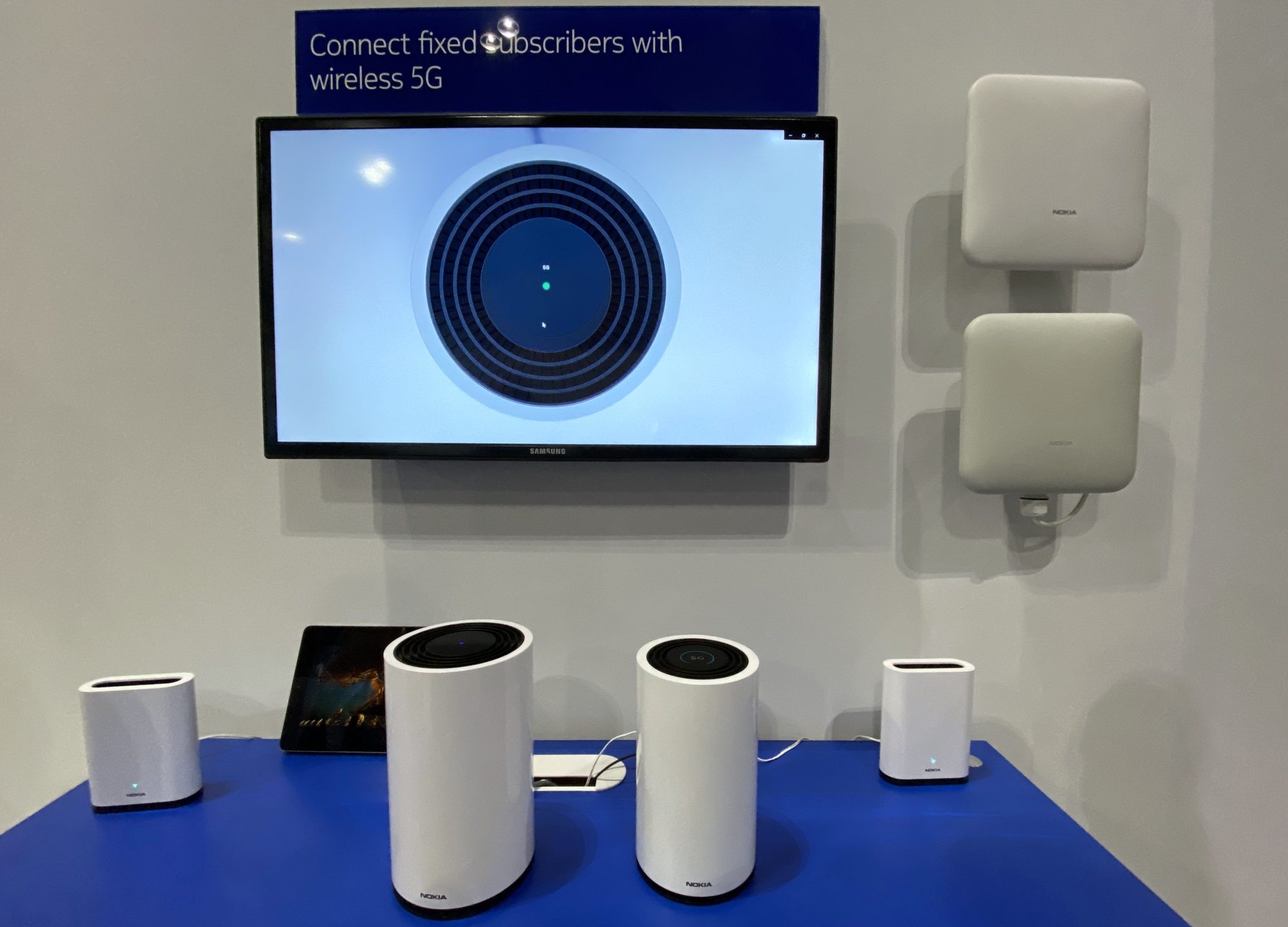
Nokia is also providing base stations to carriers, but its booth was far more focused on spotlighting the consumer and business applications of 5G technology — and many of its staffers were oddly abrasive. One exception was at a demo area focused on its 5G home broadband solutions, which include the indoor Wi-Fi 5 and 5G router units shown on the table (first-generation on the left, smaller upcoming second-generation on the right), and the outdoor units mounted on the wall. Thus far, Nokia’s home 5G solutions have been largely focused on sub-6GHz service, and they’re beginning to see some pickup in two countries, with more to come as the second-gen model with Qualcomm’s improved Snapdragon X55 modem becomes available.
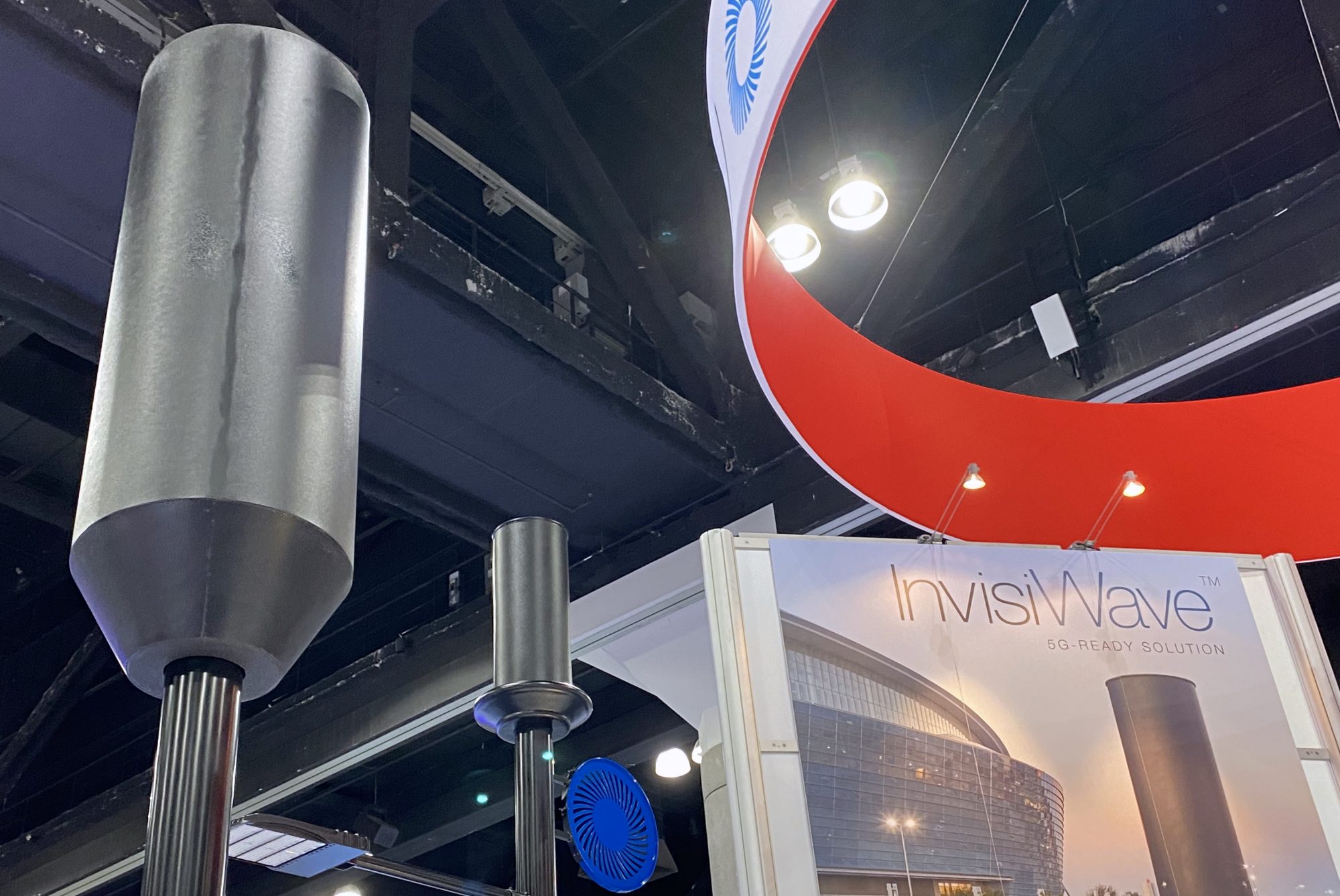
Multiple companies were showing off aesthetically neutral 5G base stations that could be mounted in cities and at facilities such as stadiums to deliver high-speed cellular service. Representatives told me about the special need for not only radio-transparent housing materials such as resilient foams, but also ways to combat surprising 5G-impeding elements — one company mentioned that freezing raindrops can create signal-scattering prisms, just one of the challenges that must be anticipated and worked around before a carrier deploys billions of dollars worth of long-term tower infrastructure across the United States.
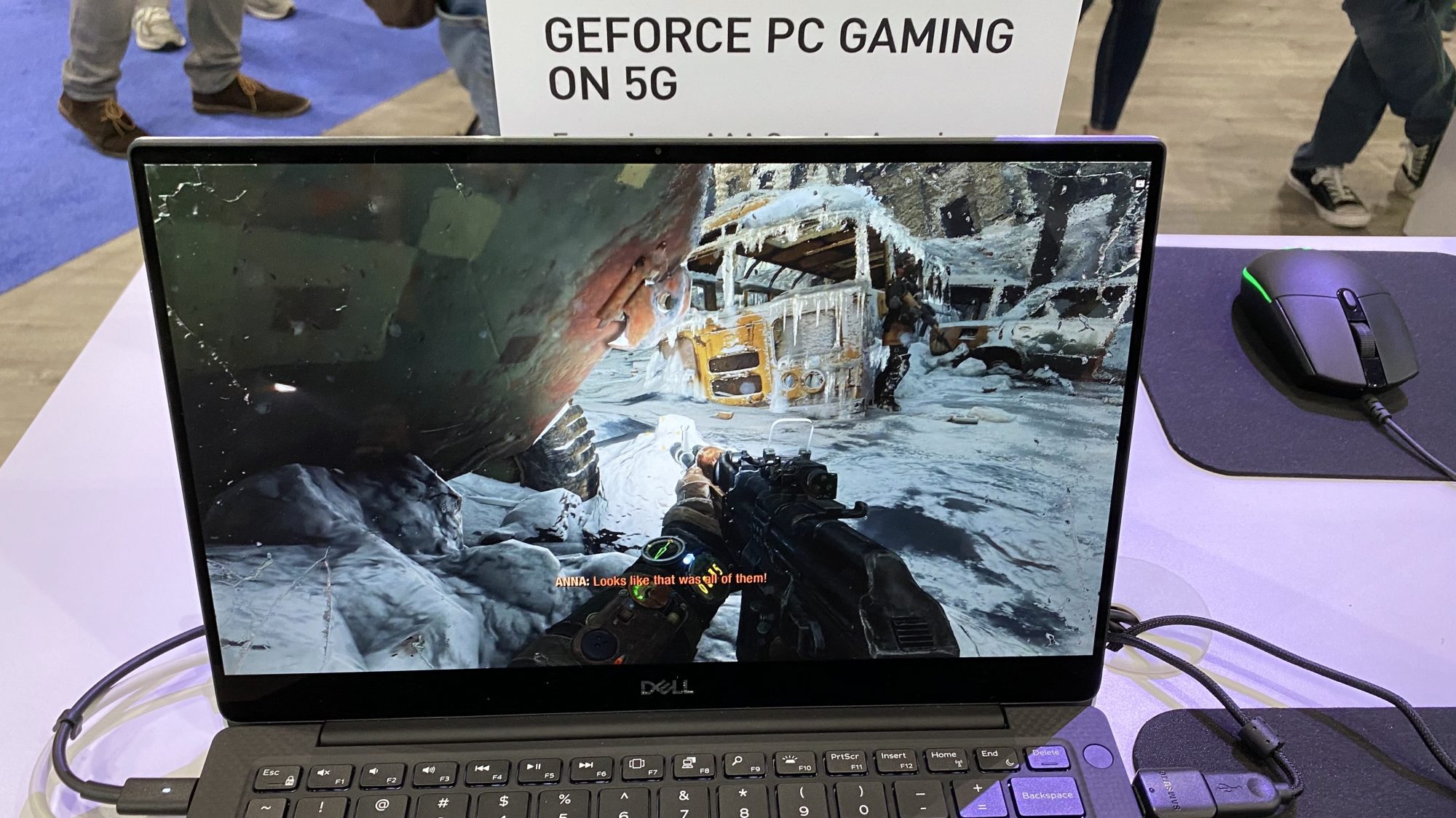
Nvidia’s booth was surprisingly tame at MWC Los Angeles, but there was a seemingly live demo of how 5G will enable underpowered devices such as thin laptops to enjoy high-performance streamed AAA gaming content over wireless networks. The unstaffed demo station had what appeared to be a super low latency, full resolution game running from a server located elsewhere, but no one was on hand to explain what was actually being accomplished technically with the demo. Regardless, it looked pixel-level clean and smooth — a lot better than the early 2019 5G gaming demos offered by Intel at CES.
Last and least, there were lots of small vendors using 5G, AR, and AI as buzzwords to generate attention for their offerings — some legitimately, some recklessly. One startup was showing off “iGlass AR Theater,” a pair of glasses with a legitimately nice 3K-resolution display inside, which the founder explained — when asked — was just for watching TV, and not in any way actually augmented reality. He was at MWC Los Angeles seeking $3 million in funding to get production started. Another company, 247, was showing off $139 “IoT-based stun guns” that were really just using Bluetooth to communicate with cell phones. More reasonably, Nota was one of multiple companies working to bring deep learning AI models out of the cloud and into pocket-sized devices.
Parting thoughts
Mobile World Congress is famous for delivering annual snapshots of what’s going on in mobile technology at a given point in time, and the Los Angeles show was no exception. Walking around the exhibition areas, I had no doubt that the world is closer than most people realize to some major and exciting evolutions in mobile technology, while some actually revolutionary advances are also coming, albeit on less certain timetables.
That said, Sprint’s announcement of expanded 5G service to more customers in 9 previously established cities was a microcosm of the event. At this stage, the mobile industry seems to be largely in head-down mode focusing on 5G rollouts and proving future use cases, while not doing quite enough to actually get people excited about buying early 5G devices. I can understand all of the reasons for this, but despite the giant 5G signs at carrier booths, the companies that were most aggressively pitching 5G at MWC Los Angeles were the ones selling base stations and poles.
It was disappointing to see so little attendee-facing involvement from major players such as AT&T, Qualcomm, and T-Mobile, who collectively have tremendous importance in the U.S. mobile industry. I can understand why AT&T wouldn’t want to show up and defend its phantom 5G and phony 5GE networks, or why T-Mobile might not have enough hardware to show off its nascent low- and high-band 5G services, but it would have been great to see Qualcomm spotlighting its many efforts across 5G, XR, and other subjects of importance to the mobile industry.
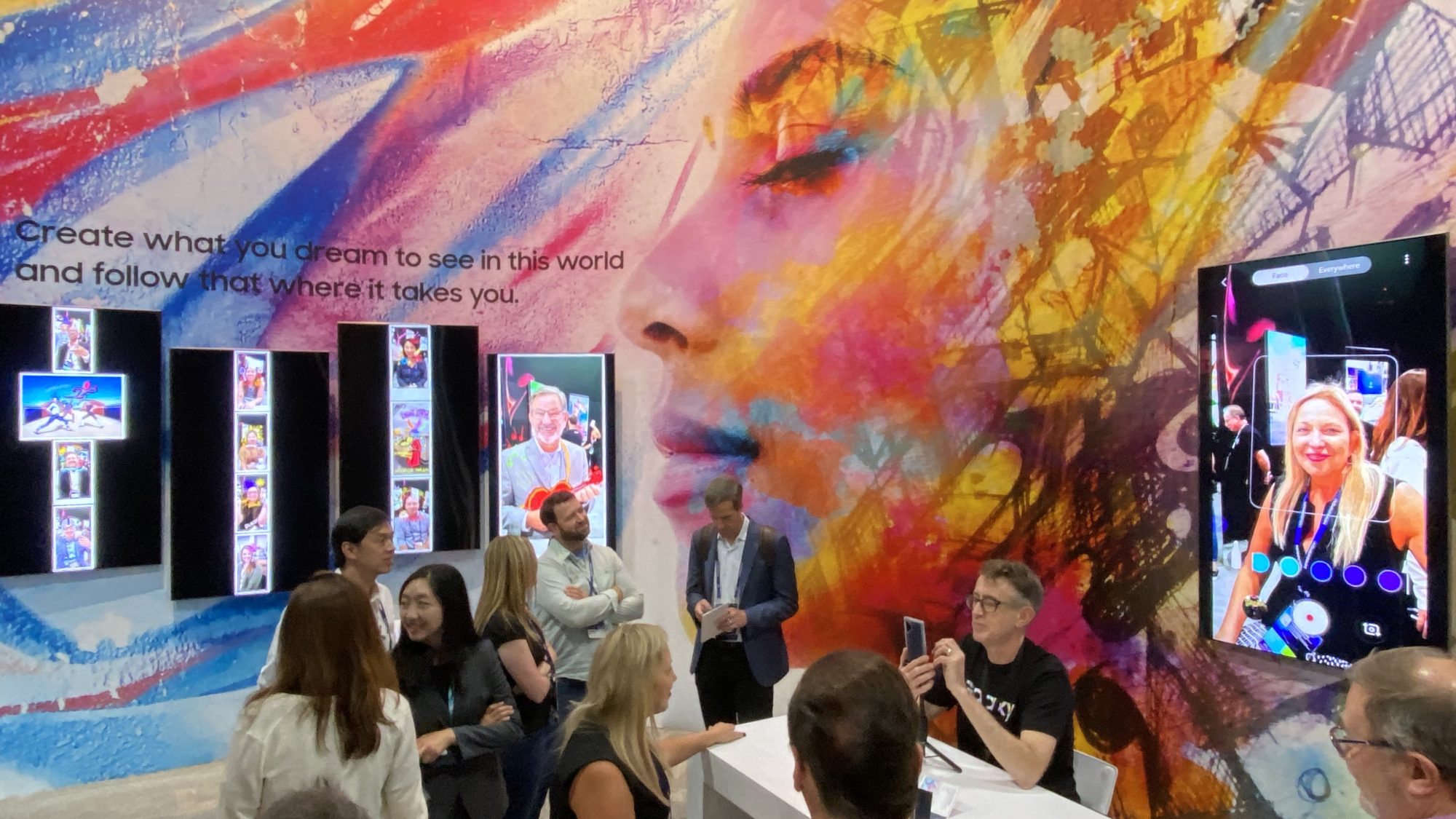
Similarly, I was unsurprised but still saddened to see nothing from Apple, which eschews trade shows but plays an outsized role in the U.S. mobile space and could really contribute to discussions about the industry’s future. In its absence, Samsung is largely defining expectations for 5G, AR, and next-generation mobile technologies, both in consumer devices and industrial settings. Based on Apple’s track record, that situation is unlikely to change anytime soon.
By this time next year, 5G and mixed reality hardware will be so widely available across the world that these early days of modest carrier participation and so-so demos may be forgotten; many people will be experiencing or able to experience the real thing every day. My feeling, however, is that all of the big names in mobile need to shrug off the (legitimate) growing pains of getting to this point and really step up the energy and enthusiasm around what’s coming next, either in trade shows or in broader marketing efforts. If they don’t, consumers may start losing interest during what could otherwise be one of the most exciting times in the history of wireless technology, and if that happens, all bets for broad adoption and major new product rollouts will be off.
